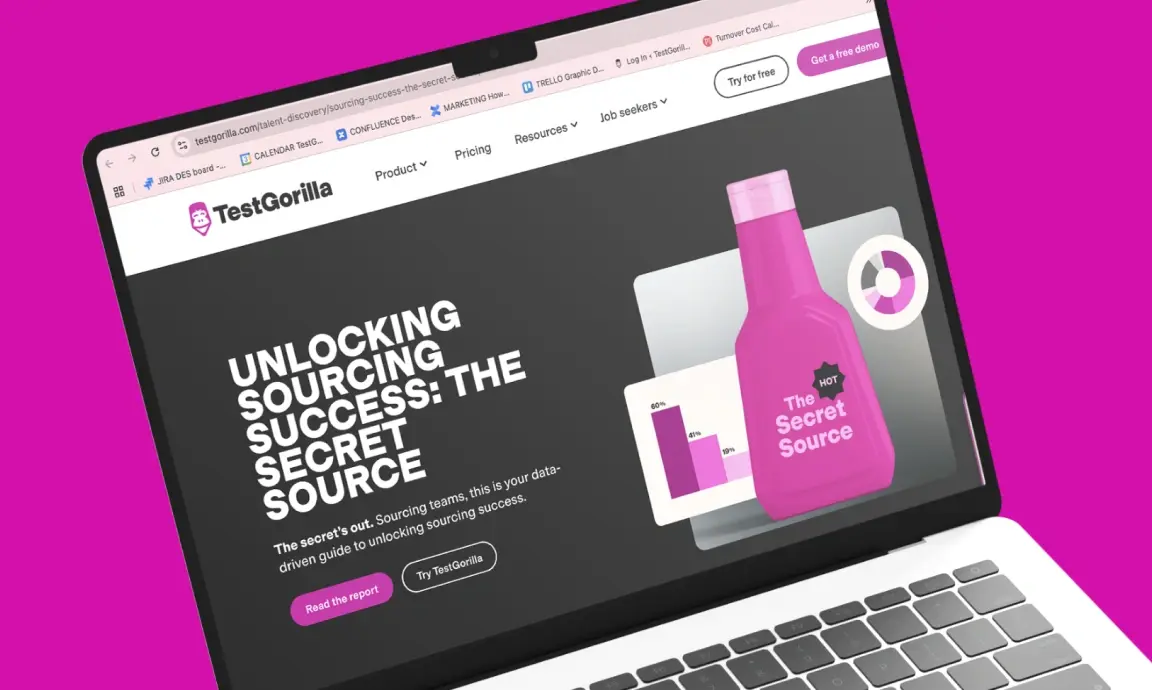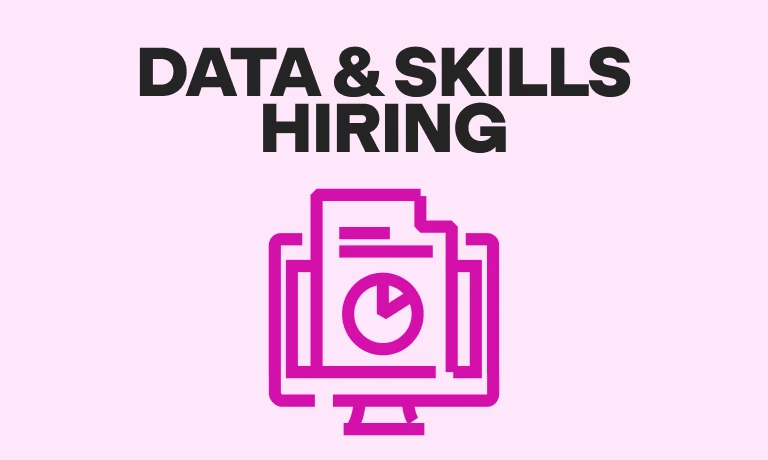Many industries are grappling with an ever-expanding engineer shortage. In fact, there are currently 40 million unfilled technical jobs globally. [1]
As an example, despite computer science engineering graduation rates being on the rise internationally, there are simply not enough of these candidates with the right skills to meet employer demand.
Luckily, there are powerful tools at your disposal to attract and hire the right engineers for your organization. In this article, we’ll identify the main challenges of hiring and recruiting engineers and five effective strategies to overcome them.
What are the challenges of recruiting engineers?
Engineers are in high demand for their unique blend of technical and soft skills required for roles in industries like tech, manufacturing, and research.
But many organizations look in the wrong places for strong candidates or provide a subpar candidate experience once they find them.
Let’s take a closer look at some of the main challenges of recruiting engineers.
Finding the right talent
Employers that use outdated hiring practices like degree, resume, and experience requirements are actually shrinking their talent pools, making it harder to find the right talent.
Traditional hiring practices that rely on degree inflation and experience requirements often end up achieving the opposite. They shrink talent pools by ignoring large swaths of candidates with relevant skills but no degrees.
Longer time-to-hire
Since engineering roles require a large amount of technical skills, they typically take longer to fill. On average, hiring IT and engineering roles takes more than 40 days.
If a company is lucky enough to locate skilled engineering candidates, the lengthy hiring process leaves positions unfilled for longer. This is due to unending rounds of technical interviews, resume screening, and disorganized hiring practices.
Negative candidate experience
Due to the small number of qualified engineering candidates on the job market, they can be more selective of the companies they choose to work for. That’s why it’s important for employers to consider the candidate’s experience during the hiring process.
For example, most tech companies value precision over hiring speed when assessing engineering candidates. But putting these engineers through uniquely long and tedious hiring processes creates a negative applicant experience. This can result in candidates looking for positions elsewhere.
Tech companies can value precision in their hiring process to find the perfect fit. However, making candidates jump through hoops leaves skilled engineers feeling that their time and effort is not being respected.
Attracting passive candidates
Because there are more engineering roles than there are talented candidates, engineers may not be actively looking for new positions. This poses a major recruitment challenge for businesses, meaning they have to adjust their hiring strategy to engage and recruit passive candidates.
In other words, companies have to spend time and resources locating, contacting, and incentivizing employed engineers. Once they are able to start a conversation, hiring managers have to accommodate candidates’ work schedules and manage delayed start times.
6 strategies for recruiting engineers
Although hiring engineers (like civil engineers) is challenging, there are several ways for organizations to improve their recruitment potential.
At the core of each of these strategies is an organization’s commitment to putting people first by improving and advertising a good company culture and adequately assessing candidates’ skills.
Let’s take a look at six effective strategies for recruiting engineers that cut costs and time-to-hire, all while filling important roles with engaged talent.
1. Expand your talent pool
Research from Gartner predicts for 2023 and beyond that most successful companies will drop degree and experience requirements to focus on a candidate's ability to perform in their role.
Eliminating these outdated requirements is a crucial strategy to welcome skilled engineers into your talent pool – regardless of whether they went to school or have years of role-specific experience on their resumes.
Companies that hire for skills also attract more diverse candidates into the recruiting process. This increases the potential of filling roles with innovative and creative talent.
2. Use multi-measure talent assessments
If you don’t rely on degrees and experience, how do you measure engineers’ skills?
This is where multi-measure talent assessments, like skills assessment tests, come in handy. Testgorilla’s Software Engineer test, for example, is a role-specific skills test. It evaluates engineers’ knowledge of basic engineering principles and concepts like:
Linear and nonlinear data structures
Algorithm analysis
Computer science fundamentals
But multi-measure talent assessments – unsurprisingly – don’t only assess technical skills. They give organizations hard data about candidates’ skills, behavioral attributes, personality types, motivations, and ability to add to your existing culture.
Our test library contains hundreds of skills assessment tests to find top-tier engineer candidates. It includes:
Technical skills tests
Cognitive ability tests
Language tests
Personality and culture tests
Programming skills tests
Roles-specific tests
Situational judgment tests
Software skills tests
Multi-measure testing is part of a holistic hiring process that gives recruiters a 360-degree view of a candidate to find the best engineers for your organization.
3. Run structured interviews
The interview process can be exhausting for all parties involved. If you’re thinking that interviews are necessary to learn whether a candidate is the right fit. Well, it depends on the type of interview.
Running multiple rounds of unstructured interviews wastes employers’ and candidates’ time. This is because it doesn’t offer any measurable data about candidates’ engineering skills.
Structured interviews, on the other hand, are a win-win for candidates and recruiters because they provide meaningful data about each candidate while giving them an opportunity to show off their engineering skills in a timely process.
A structured interview asks each candidate the same predetermined questions in the same order. Interviewers then gather the responses and score them using a system they created beforehand.
They’re cheaper to conduct because they require less time from your hiring managers. They also ensure that if a candidate is hired, they have the skills to stay with your organization for the long term.
Our mechanical engineer interview guide, for example, offers 70 interview questions to assess candidates’ general knowledge and skills before you explore their personality and behavioral attributes.
4. Communicate positive brand identity
Employer branding is the process of defining your organization’s brand to job seekers and applicants. It often includes planning, creating, and executing strategies to market the employment experience.
Focusing on employer branding gives your organization a competitive edge by
Raising awareness about your brand’s values and goals
Informing candidates about attractive benefits and vacation offerings
Giving candidates information about corporate social responsibility initiatives and positive community impact
Advertising learning and development opportunities
Emphasizing your innovative and inclusive company culture
Showing off your brand identity provides passive and active engineer candidates with an insight into what your company stands for and what growth opportunities you offer. It also showcases the types of projects that your teams work on.
5. Write great job descriptions
Often the first place candidates come into contact with openings is through job descriptions. With most candidates spending less than 30 seconds reviewing a job posting, you need to make the most out of your descriptions.
When writing a great job description, focus on
The responsibilities of the role
The skills required to succeed in the role
The duties expected of the employee
It’s also important to advertise your organization’s values. What do you stand for? What is your company’s mission?
Engineers are curious and innovative by nature. Use your job descriptions to detail your upskilling and reskilling opportunities to stand out from the field.
6. Ensure positive candidate experience
Candidate experience is the perception that jobseekers have of your business when applying for a role. It’s important to make a good impression on applicants throughout the hiring process so that they feel respected and informed about the role.
How do you ensure a positive candidate experience?
Be transparent and accurate about the role. Make sure the role you are hiring for fills an actual need within your organization. You should also communicate exactly what the role entails so engineers don’t jump ship if the role is different than advertised.
Make it easy for engineers to apply. Avoid making the initial application more complex and time-consuming than it needs to be. Don’t overwhelm a candidate with information or arbitrary requirements.
Follow up early and often. Maintain contact throughout the recruitment process. For example, follow up with a Spatial Reasoning test to keep the process moving while gathering important data about candidates’ chemical and mechanical engineering skills.
Be open to giving and receiving feedback. Giving personalized feedback shows candidates that you value the time and effort they put into the application. It also shows that you support them in future applications. Asking candidates for feedback on their experience can also help improve your candidate journey in the future.
The best insights on HR and recruitment, delivered to your inbox.
Biweekly updates. No spam. Unsubscribe any time.
Fill open roles with skilled engineers
Attracting and hiring skilled engineers has become increasingly difficult due to talent shortages and ineffective hiring practices.
Focusing on candidates’ skills over education history, using multi-measure talent assessments to predict job success, and creating a positive candidate experience are crucial steps to filling open roles with the right candidates.
Want more tools to recruit engineers? Explore our library of talent assessments to hire skilled engineers with TestGorilla’s free plan or request a free 30-minute live demo.
Source/s:
1. Sloyan, Tigran. (June 08, 2021). "There are currently 40 million unfilled technical jobs globally." Forbes. https://www.forbes.com/sites/forbestechcouncil/2021/06/08/is-there-a-developer-shortage-yes-but-the-problem-is-more-complicated-than-it-looks/?sh=47dc380a3b8e. Retrieved August 16, 2023.
Related posts
You've scrolled this far
Why not try TestGorilla for free, and see what happens when you put skills first.



















